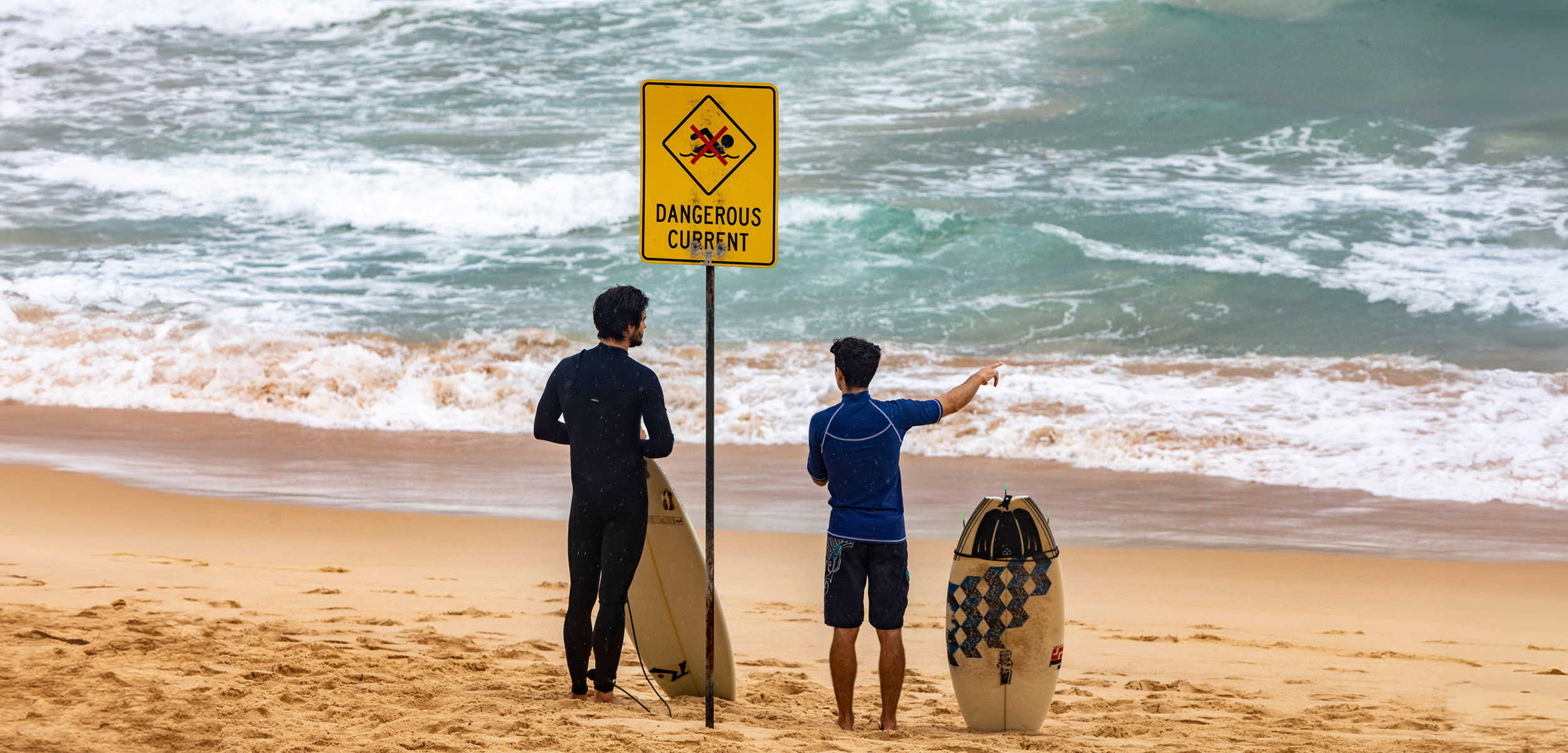Surfers to the Rescue
Surfers are just, like, totally stoked to help, bro.
Article body copy
The waves were clean and curling one day about ten years ago when surfer Will Rose stepped into the water at Ocean Beach in San Diego, California. Midway through his session, Rose, an experienced surfer then in his mid-20s, spotted a young surfer, perhaps 10 years old, who’d lost his board and was struggling in a powerful rip current. Rose paddled in pursuit as the boy was funneled underneath a long pier and swept rapidly out to sea.
“It was one of the crazier rip currents I’ve ever seen,” Rose recalls.
He traded places with the boy, handing over his board and pushing the younger surfer shoreward in the bosom of a breaking wave. Rose clung to a pier piling in the surging water as a lifeguard hurried over on his own board before helping him back to the beach.
Rose’s act of heroism, new research suggests, is a surprisingly common one for surfers. In a recent survey conducted in New Zealand, scientists found that throughout their lives, surfers reportedly rescue an average of three people who are drowning or otherwise struggling in the water. The findings cast surfers—typically stereotyped as the harmonizing, longboarding Beach Boys, as actor Sean Penn’s stoned but affable Jeff Spicoli of Fast Times at Ridgemont High, or as the bank-robbing adrenaline junkies of Point Break—in a new light: as largely overlooked guardians of the beach.
The survey, conducted in 2022 by Jamie Mead, then a graduate student at Auckland University of Technology (AUT) in New Zealand, reveals that some surfers have reported participating in 10 to 20 rescues. The research, Mead writes in his paper, suggests that organizations involved in drowning prevention “should work closely with surfing communities on ways to reduce fatalities at coastal beaches.”
The study, coauthored by AUT colleagues Loïc Le Dé and Melanie Moylan, began with an online survey of 418 surfers from across New Zealand. Processing the responses, Mead found that these surfers were claiming to have participated in a total of 1,274 rescues, including 296 times when they felt they’d saved a person’s life. Of these rescues, 73 percent took place on beaches without lifeguards present, underscoring the crucial role surfers play in protecting beachgoers.
The survey responses also show that in nearly nine out of 10 rescues, the people the surfers helped required no further treatment after the incident, and presumably left no official record or report of the event.
“We need to get surfers the recognition they deserve and do more research to accurately quantify how many rescues they’re actually doing,” Mead says.
Mead and his coauthors propose leaning into surfers’ adopted guardian status and making equipment like stretchers and automated electronic defibrillators available in places such as surf clubs, beach huts, and lockboxes near the water.
Other surfers, too, are considering ways to make the most of this propensity to protect other beachgoers. Andy Joyce, the development officer for the International Surfing Association, recently surveyed 169 surf coaches registered with his organization. These respondents reported having rescued a whopping 938 people in total. Of these rescues, nearly half were performed by 27 surfers; that’s about 16 each. Joyce found that the surfers who rescue the most people tend to be very experienced in the water and trained in delivering first aid. He thinks with a little organized effort coastal communities could broaden these skills across the surfing population.
“We should be [offering] surfers free one-day or two-day bystander rescue courses on how to do CPR, how to pull people out of the water effectively, and so on,” he says.
Joyce says surfers could be an especially valuable resource in developing nations that lack coordinated drowning prevention programs, such as lifeguard services and swimming education for kids.
The World Health Organization estimates that every year, 236,000 people die from drowning. That’s nearly 27 people per hour—a toll that would likely be considerably higher in the absence of surfers.
Joyce says that none of this is intended to downplay the critical service offered by trained lifeguards. “They’re absolutely essential,” he says.
But because surfers tend to already be in the water when a dangerous situation develops, they’re often better positioned than beach lifeguards to serve as first responders, Joyce says.
That’s exactly why Rose reached the struggling swimmer at Ocean Beach several critical minutes before official help arrived from shore. And it’s why, when the surf’s up, lifeguards aren’t the only ones on duty.

